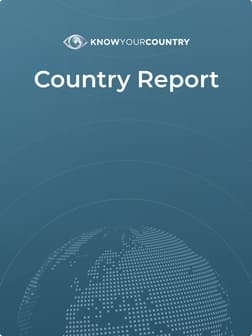
Italy Country Summary
Sanctions
Lower Concern
FATF AML Deficient List
Lower Concern
Terrorism
Lower Concern
Corruption
Medium Concern
US State ML Assessment
Higher Concern
Criminal Markets (GI Index)
Medium Concern
EU Tax Blacklist
Lower Concern
Offshore Finance Center
Lower Concern
Please note that although the below Summary will give a general outline of the AML risks associated with the jurisdiction, if you are a Regulated entity then you may need to demonstrate that your Jurisdictional AML risk assessment has included a full assessment of the risk elements that have been identified as underpinning overall Country AML risk. To satisfy these requirements, we would recommend that you use our Subscription area.
If you would like a demo of our Subscription area, please reserve a day/time that suits you best using this link, or you may Contact Us for further information.
Anti Money Laundering
FATF Status
Italy is not on the FATF List of Countries that have been identified as having strategic AML deficiencies
Compliance with FATF Recommendations
The latest follow-up to the Mutual Evaluation Report relating to the implementation of anti-money laundering and counter-terrorist financing standards in Italy was undertaken by the Financial Action Task Force (FATF) in 2019. According to that Evaluation, Italy was deemed Compliant for 18 and Largely Compliant for 20 of the FATF 40 Recommendations. It was deemed Highly effective for 0 and Substantially Effective for 8 of the Effectiveness & Technical Compliance ratings.
Sanctions
There are no international sanctions currently in force against this country
Criminality
Rating |
0 (bad) - 100 (good) |
|---|---|
| Transparency International Corruption Index | 54 |
| World Bank: Control of Corruption Percentile Rank | 68 |
Corruption and organized crime significantly hinder investment and economic growth in Italy, particularly affecting micro, small, and medium-sized enterprises. Despite legislative efforts to combat corruption, including the introduction of anti-corruption laws and measures to protect whistleblowers, challenges remain, as Italy's corruption perception score is still below the EU average. Additionally, various forms of organized crime, including human trafficking, arms trafficking, and financial crimes, continue to pose serious threats to the country's economic and social stability.
Economy
Italy's economy is the eighth largest globally and the third largest in the EU, excelling in sectors such as business services, agriculture, fashion, and tourism. Despite its resilience, GDP growth has slowed from 4.0% in 2022 to a projected 0.9% in 2023, influenced by inflation and reduced private consumption. The country benefits from a diverse economy dominated by small and medium-sized enterprises, with significant foreign investment and a skilled workforce contributing to its attractiveness for investors.
Italy presents a favorable investment climate characterized by a large and diversified economy, a skilled workforce, and significant foreign investment opportunities, particularly in sectors such as manufacturing, telecommunications, and pharmaceuticals. The government actively promotes foreign direct investment through initiatives like the National Recovery and Resilience Plan, which aims to address structural economic challenges and enhance market competitiveness. However, challenges such as bureaucratic inefficiencies and a complex regulatory environment remain, necessitating reforms to improve administrative capacity and reduce investment uncertainty.

Buy Full Italy Report
$125 one time payment
- Risk Analysis
- Corruption
- Economy
- Sanctions
- Narcotics
- Executive Summaries
- Investment Climates
- FATF Status
- Compliance
- Key Findings
